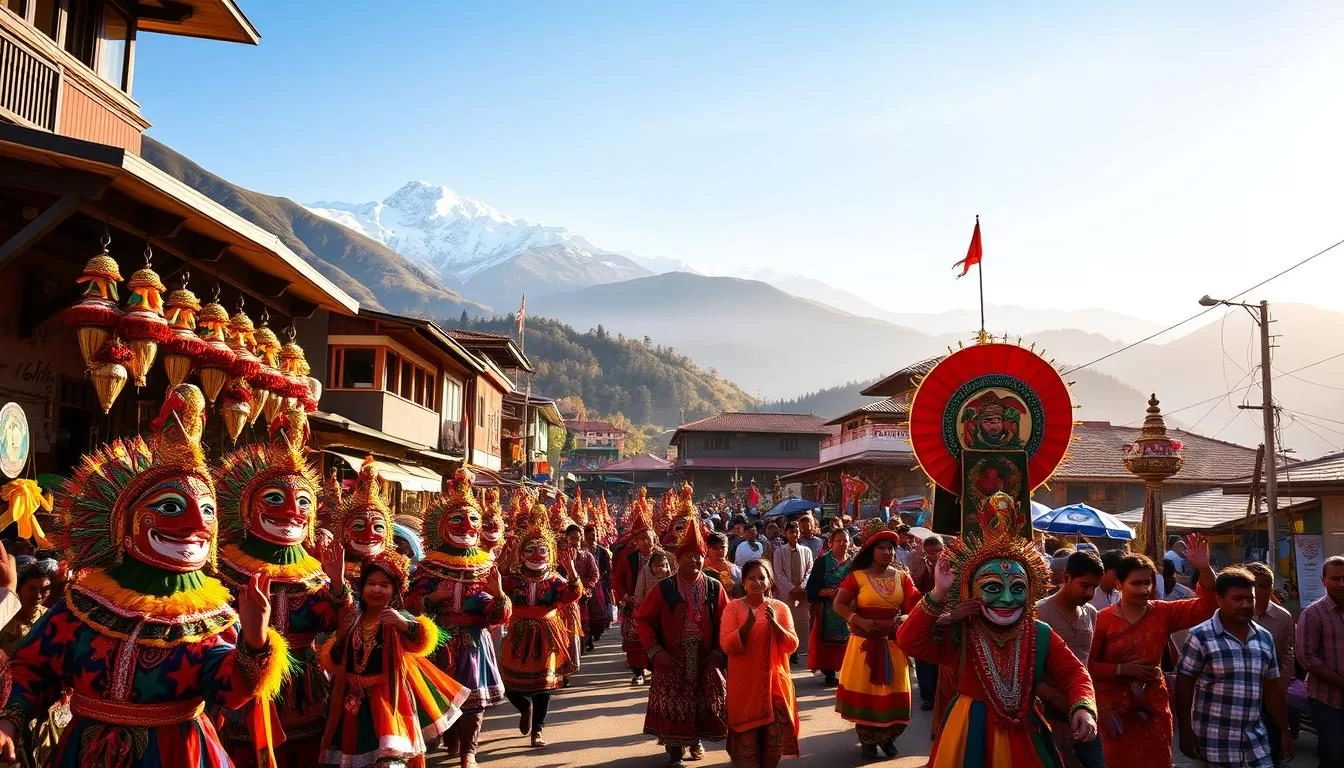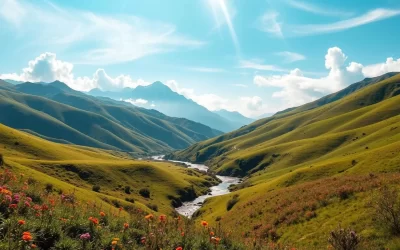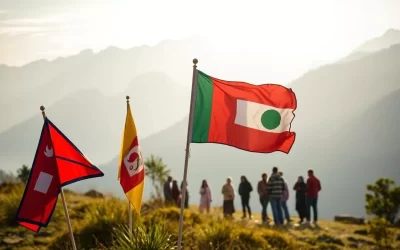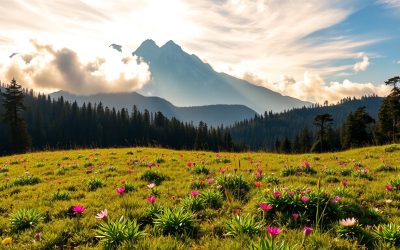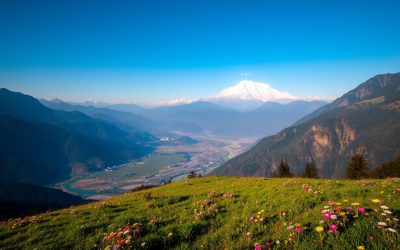✓ Accommodations ✓ Flights ✓ Rental Cars
When you visit Sikkim, you’ll discover a world where vibrant festivals and rich culture come together. This beautiful state in northeast India is a treasure trove of diverse traditions and breathtaking landscapes.
The festivals in Sikkim offer a unique glimpse into the soul of this enchanting Himalayan state, where ancient traditions blend seamlessly with natural beauty. As you explore Sikkim, you’ll experience the warm hospitality of its people through community celebrations, traditional foods, and cultural performances.
From marking important religious events to celebrating seasonal changes, Sikkim’s festivals are a true reflection of its diverse cultural heritage. This guide will help you navigate the most significant festivals, allowing you to plan your visit around these unforgettable cultural experiences.
The Cultural Tapestry of Sikkim
As you explore Sikkim, you’ll discover a cultural tapestry woven from numerous threads, including Buddhist, Hindu, and indigenous Lepcha traditions. The state’s cultural identity is a rich mosaic, shaped by its strategic location as a cultural crossroads where Tibetan, Nepali, Bhutia, and Lepcha communities have coexisted harmoniously for centuries.

The festivals of Sikkim offer a glimpse into the life and values of its people, showcasing the significant role of religion in shaping the state‘s cultural practices. You’ll notice how Buddhism, in particular, influences the festival calendar, reflecting the deep-rooted culture and traditions of the region. During these celebrations, the warm hospitality of Sikkim’s community becomes especially evident as they come together to welcome visitors and share in their joy.
By participating in Sikkim’s festivals, you’re not only witnessing living traditions preserved through generations but also gaining authentic insights into the local way of life. This cultural richness is a hallmark of Sikkim, making it a unique and enriching destination for travelers.
Understanding Sikkim’s Festival Calendar
Sikkim’s festival calendar is a rich tapestry of cultural and religious celebrations that take place throughout the year.
Thankfully, Sikkim’s festivals occur throughout the year, following the Buddhist calendar. Many vibrant festivals, like Losoong, Bomchu, and Tihar, take place in winter, while Saga Dawa and Drupka Teshi are celebrated in the pleasant summer months.
The festival calendar in Sikkim is influenced by both the Tibetan lunar calendar and the Gregorian calendar, creating a unique celebration schedule. Here are some key aspects to consider:
- Sikkim’s festival calendar follows both the Tibetan lunar calendar and the Gregorian calendar, creating a year-round celebration schedule.
- Many major Buddhist festivals shift dates each year as they follow the lunar calendar, so it’s helpful to understand this when planning your visit.
- You can experience different types of festivals depending on when you visit—winter brings New Year celebrations, spring offers religious observances, summer features nature worship, and autumn showcases harvest festivals.
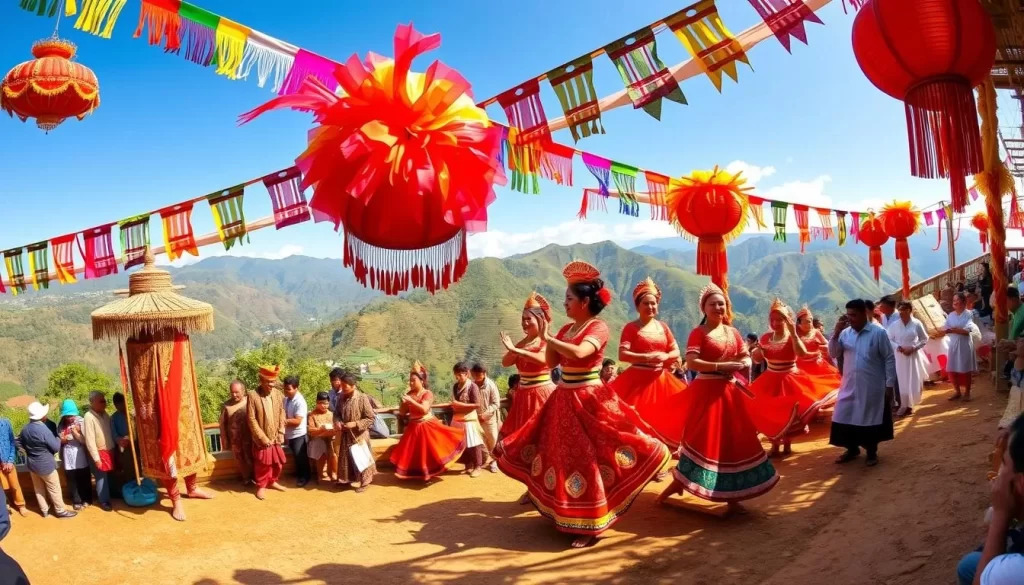
By familiarizing yourself with Sikkim’s festival calendar, you can time your visit to coincide with the festivals that most interest you.
Winter Celebrations: Losoong – The Sikkimese New Year

Losoong, one of Sikkim’s most significant festivals, heralds the beginning of the Sikkimese New Year. It marks the end of the harvest season and is celebrated with traditional zeal, reflecting gratitude towards the Gods for the year’s bounty.
During Losoong, you can witness the famous “Chaam” dance performed by monks wearing colorful masks and costumes, representing the victory of good over evil. The festival is also marked by archery competitions, a traditional sport in Sikkim that showcases the skill and precision of local archers.
The celebration creates a vibrant atmosphere throughout Sikkim, with monasteries becoming centers of activity. You can observe authentic rituals and ceremonies, and taste traditional Sikkimese delicacies like “Thukpa” and “Momos” prepared specially for this festivities.
Sonam Lhochhar: Celebrating the Tamang New Year
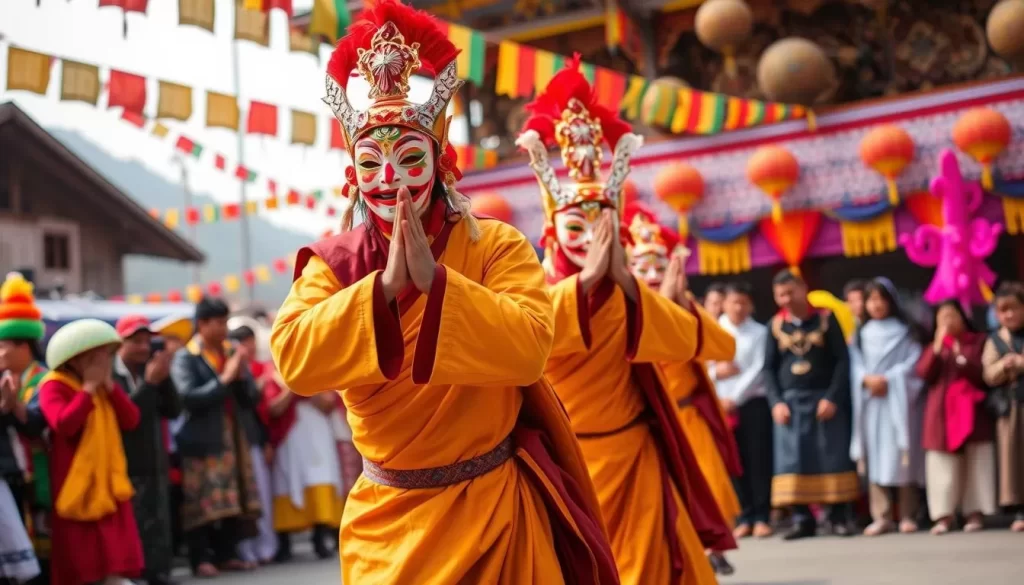
Marking the beginning of the Tibetan lunar calendar year, Sonam Lhochhar is a unique festival in Sikkim. It’s a time of renewal and purification, with prayers and rituals performed to bring wealth and good fortune for the new year. You’ll experience Sonam Lhochhar in January-February as the Tamang community celebrates their New Year with vibrant cultural displays and religious celebrations.
During the festival, you can watch the distinctive Damphu dance, where performers play a small round drum while dancing to ward off negative energies and evil spirits. The celebrations blend religious rituals with community gatherings, creating a festive atmosphere that welcomes visitors to participate.
Losar: The Tibetan New Year Festival
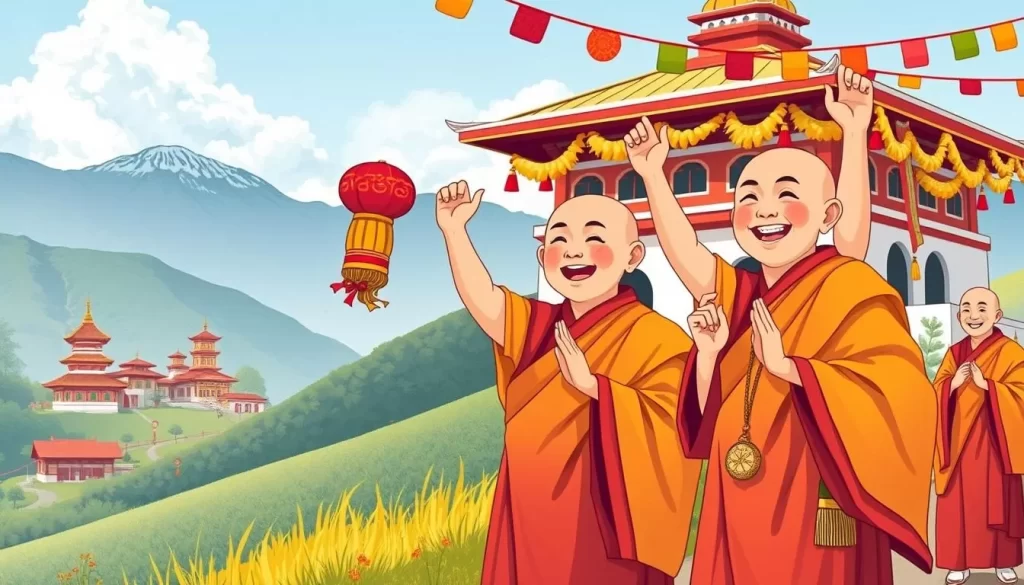
Losar, the Tibetan New Year, is a time of great enthusiasm in Sikkim, filled with traditional festivities. It’s a period when families come together, homes are cleaned and decorated, and special food offerings are made to usher in the new year with prosperity and happiness.
You’ll find Losar celebrated in February or March, marking the Tibetan New Year with three days of intense festivities throughout Sikkim. Before the festival begins, locals thoroughly clean their homes to sweep away bad fortune and prepare special decorations to welcome prosperity.
During your visit, you can observe the “Guthuk” ritual on the eve of Losar, where a special noodle soup containing hidden symbolic items is served to predict each person’s fortune for the coming year. The festival also features elaborate altar offerings called “Chemar” and spectacular monastery ceremonies, including colorful masked dances.
Bumchu: The Sacred Water Festival
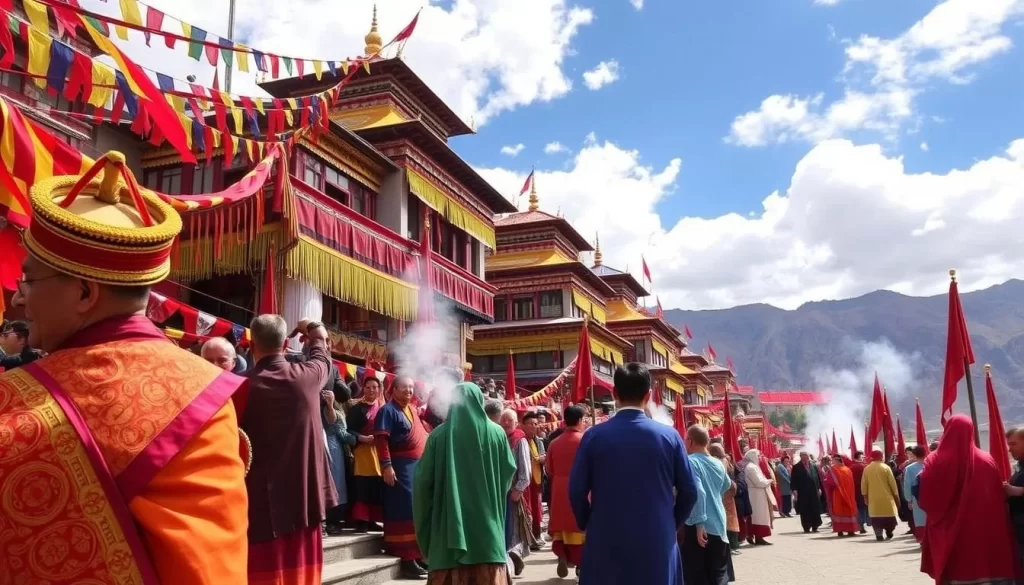
At the historic Tashiding Monastery, the Bumchu festival unfolds with spiritual grandeur. This unique festival involves the ceremonial opening of a sacred pot containing water that has been preserved from the previous year.
The monks carefully examine the water level in the pot to make predictions about Sikkim’s future. You’ll be fascinated to learn how this ancient ritual, performed at Tashiding Monastery, influences the coming year’s prospects.
Devotees gather to witness this significant ceremony, and the distribution of the sacred water is believed to bring blessings and healing properties. Experience the profound spiritual atmosphere as monks perform rituals that have remained unchanged for centuries.
Spring and Summer Festivities: Saga Dawa
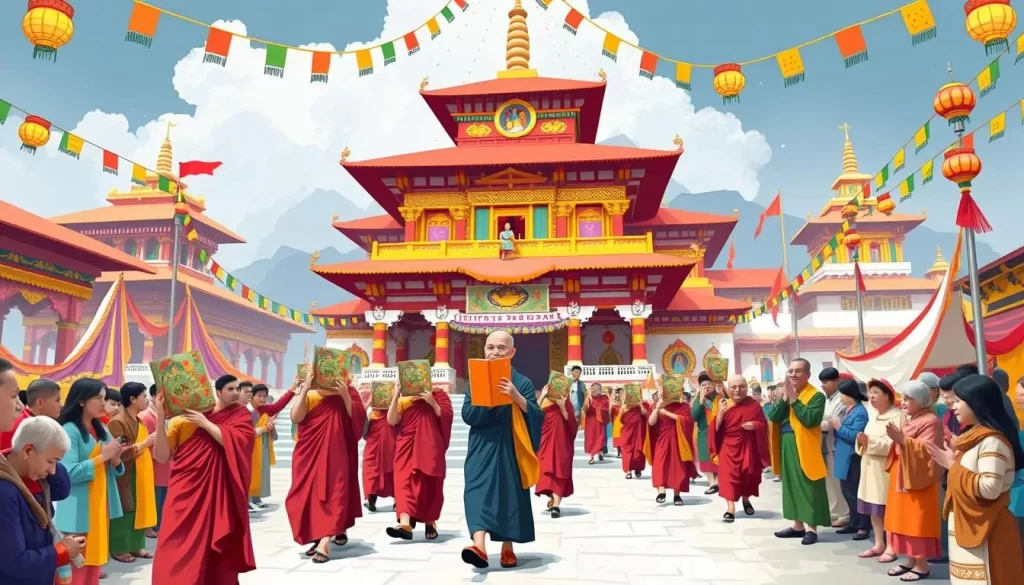
The Saga Dawa festival, marking a sacred period in the Buddhist calendar, is a time for reflection, prayer, and acts of kindness. It commemorates the birth, enlightenment, and nirvana of Lord Buddha, making it a deeply significant event in Sikkim’s cultural calendar.
During Saga Dawa, monasteries become vibrant centers of spiritual activity. You’ll witness the hoisting of the holy flag at the Rumtek Monastery, followed by a procession through Gangtok. The atmosphere is filled with prayers and the release of lanterns, symbolizing the spread of enlightenment.
Some key experiences during Saga Dawa include:
– Celebrating in May or June, marking the most sacred month in the Buddhist calendar.
– Witnessing the raising of the Saga Dawa flag, adorned with colorful prayer flags.
– Joining processions where monks and devotees carry Buddhist scriptures.
– Observing Buddhists practicing extra acts of compassion, such as releasing animals from captivity and giving to charity.
– Visiting monasteries illuminated by butter lamps, creating a deeply spiritual atmosphere.
By participating in Saga Dawa, you’ll gain insight into Lord Buddha’s teachings and experience the warmth of Sikkim’s Buddhist community.
Sikkim, India: Top Festivals to Check Out When Visiting During Monsoon
As the monsoon clouds gather over Sikkim, the state comes alive with vibrant festivals that celebrate the intricate bond between nature and human life. The monsoon season, which spans from June to September, brings with it a unique cultural experience.
You’ll discover that the lush green landscapes provide a breathtaking backdrop to the cultural celebrations. The festivities during this time honor the relationship between nature and human life, with many rituals focused on ensuring good harvests and protection from natural calamities.
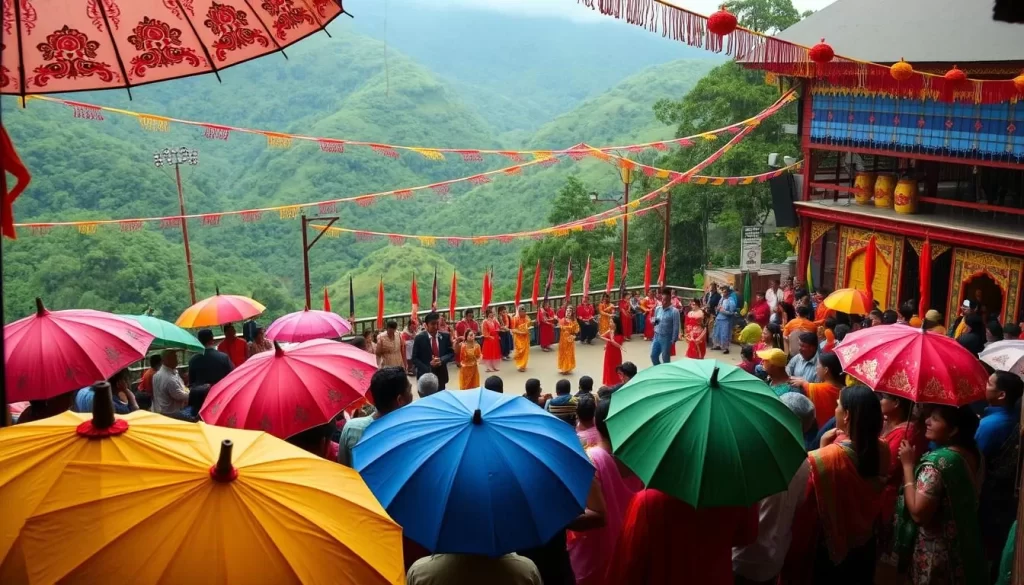
The monsoon month of July is particularly significant, as it brings Drukpa Tsheshi, a festival celebrating when Lord Buddha gave his first sermon. Special ceremonies are held at monasteries like Rumtek and Pemayangtse, which are definitely worth attending.
Visiting Sikkim during the monsoon season gives you a more intimate experience, with fewer tourists and a chance to witness the state’s cultural traditions in their most authentic form. Despite occasional rain showers, the festivities continue with indoor ceremonies and colorful processions.
Tendong Lho Rum Faat: The Festival of Prayer to Mount Tendong
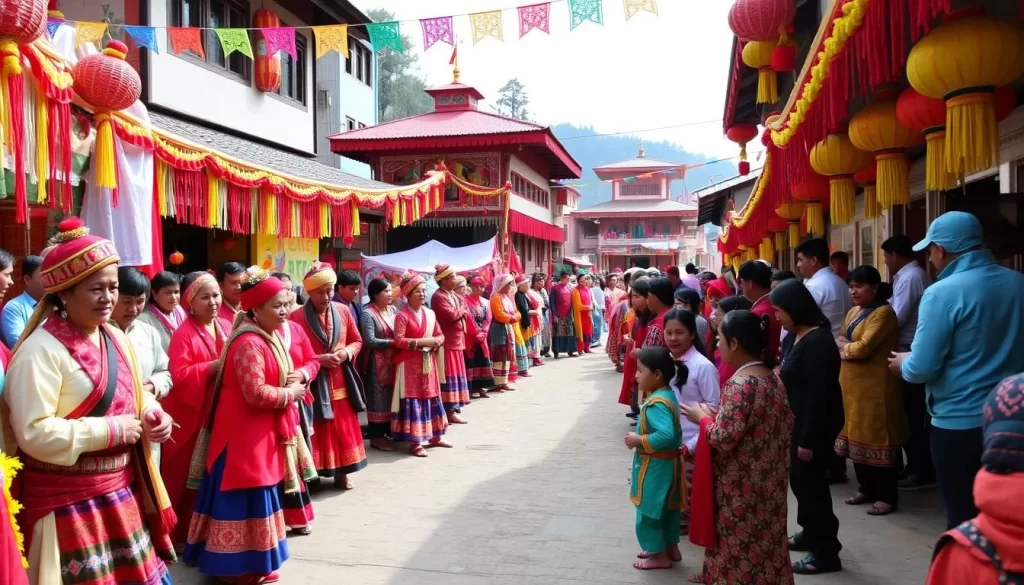
In the heart of Sikkim, the Tendong Lho Rum Faat festival is a testament to the indigenous Lepcha people’s deep-rooted connection with nature. This three-day celebration is a poignant expression of their reverence for Mount Tendong, considered a guardian deity.
The festival, translating to “Offering Prayers to Mount Tendong,” commemorates the legend of Mount Tendong rising to save the Lepcha ancestors from a colossal deluge. During the celebration, families craft miniature replicas of Mount Tendong using nine specific stones and offer prayers throughout the day, decorating them with flowers.
You can experience the festival‘s vibrancy in August, primarily celebrated by the Lepcha community with great zeal. The festivities include traditional music, dance, and storytelling, connecting the present generations with their ancestral heritage, making every day of the celebration memorable.
Pang Lhabsol: Worshipping Mount Kanchenjunga
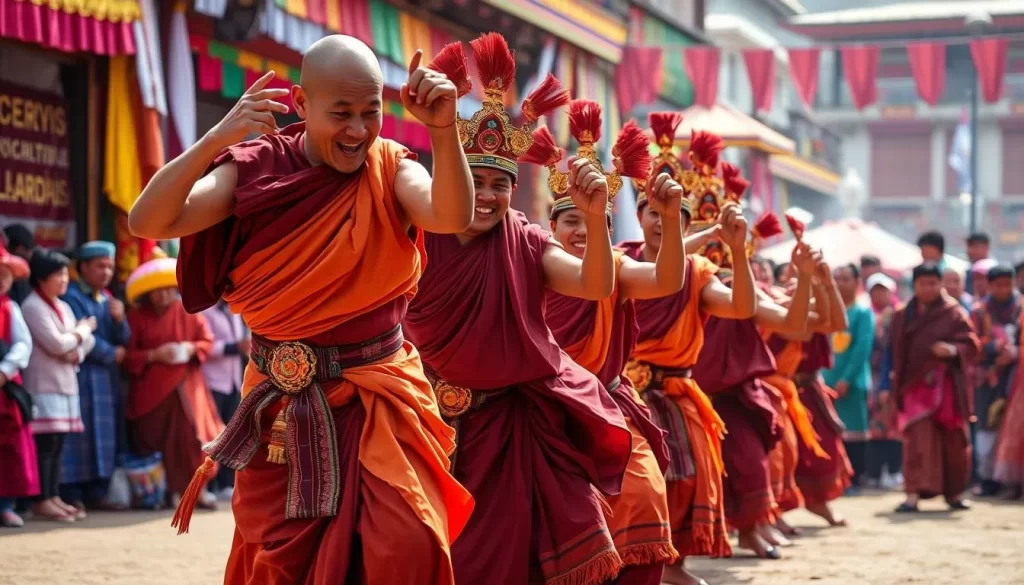
Pang Lhabsol, one of Sikkim’s most revered festivals, is a vibrant celebration honoring Mount Kanchenjunga, the state’s guardian deity. This majestic mountain is believed to protect the very soul of Sikkim.
During Pang Lhabsol, you can witness the spectacular “Pangtoed Chaam,” a dance performed by monks that commemorates the blood brotherhood treaty between the Lepchas and Bhutias. This unique event gives you insight into Sikkim’s indigenous belief system, where natural landmarks are venerated as sacred entities.
The festival is celebrated with colorful ceremonies at monasteries like Pemayangtse, where elaborate rituals honor the mountain deity. You can taste special festival foods and witness how this celebration brings together Sikkim’s diverse communities.
Autumn and Pre-Winter Celebrations: Tihar and Diwali
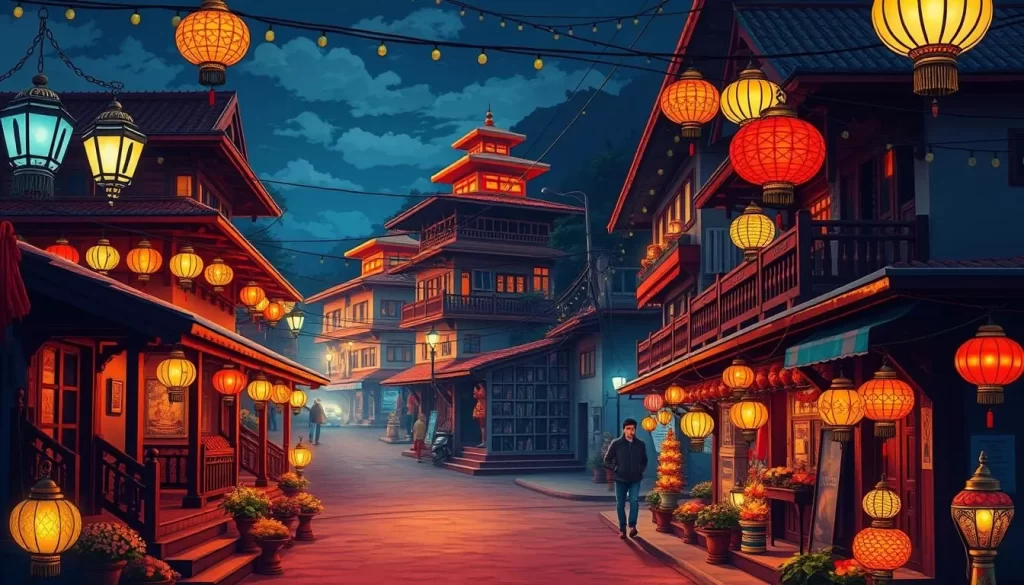
As autumn transitions into pre-winter in Sikkim, the state comes alive with the vibrant celebrations of Tihar and Diwali. Tihar, also known as Diwali in other parts of India, is celebrated with a unique Sikkimese twist. The festival is not just about lighting lamps but also about honoring the bond between humans and animals.
The celebration spans five days, each with distinct observances. You’ll witness how each day honors different beings—crows as messengers of Yama on the first day, dogs as loyal guardians on the second, cows as symbols of wealth on the third, and oxen and self on the fourth and fifth days.
The festival transforms Sikkim into a magical landscape of lights, with oil lamps and electric bulbs adorning homes, creating beautiful patterns against the mountain backdrop. Additionally, the period preceding Tihar, known as Dashain, celebrates the victory of Goddess Durga over evil forces, culminating in Vijaya Dashami, an important day for receiving blessings from elders.
When participating in these autumn celebrations, you can join in traditional games, exchange gifts, and enjoy special seasonal foods that mark the transition to the year‘s end and the approaching winter.
Modern Cultural Events: Mangan Music Festival and Flower Shows
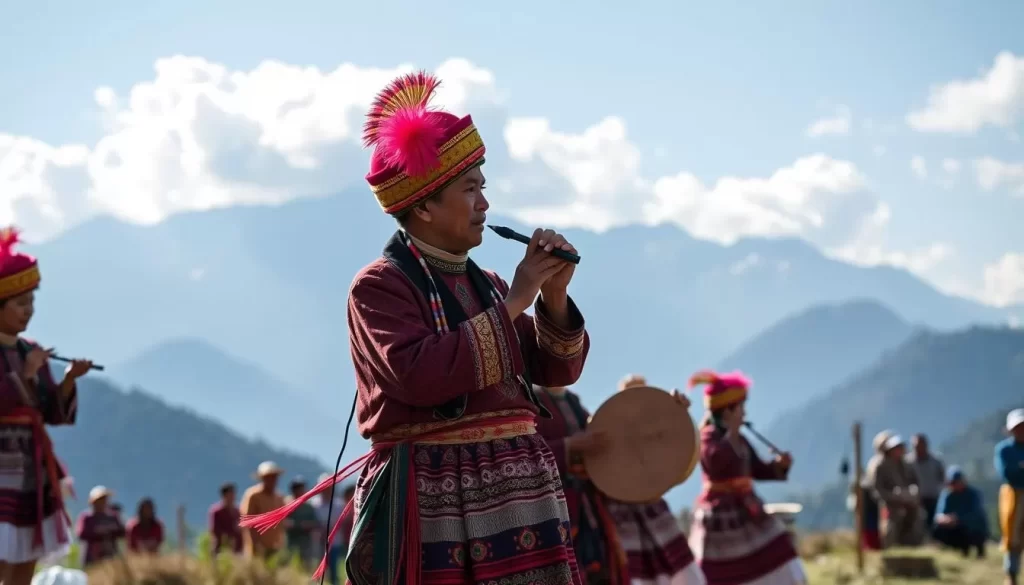
Beyond the traditional celebrations, Sikkim has a thriving scene of contemporary cultural events. The Mangan Music Festival, held annually in December, is a highlight, featuring three days of performances by local and regional bands, as well as artists from other northeast Indian states. You can enjoy traditional folk music and fusion artists, all set against the breathtaking mountains of North Sikkim.
The festival is not just about the music; it’s also an opportunity to browse exhibitions of local handicrafts and participate in cultural workshops. You can witness how traditional dance forms are being preserved and reimagined by younger generations, creating a bridge between Sikkim’s rich cultural past and its vibrant present.
Another significant event is Sikkim’s International Flower Festival, held in April-May, showcasing the state’s incredible floral diversity through elaborate arrangements and rare orchid exhibitions. It’s a celebration that attracts tourists and flower enthusiasts worldwide to witness the natural beauty of Sikkim.
Planning Your Visit: Best Times to Experience Sikkim’s Festivals
To experience Sikkim’s vibrant culture, it’s crucial to plan your visit around its festivals. Before booking your Sikkim tour package, check the festival dates to ensure you don’t miss out on the excitement.
You should plan your visit strategically, as many festivals follow the lunar calendar and change dates annually. For winter festivals like Losoong and Losar, visit between December and February to combine cultural experiences with breathtaking views of snow-capped mountains.
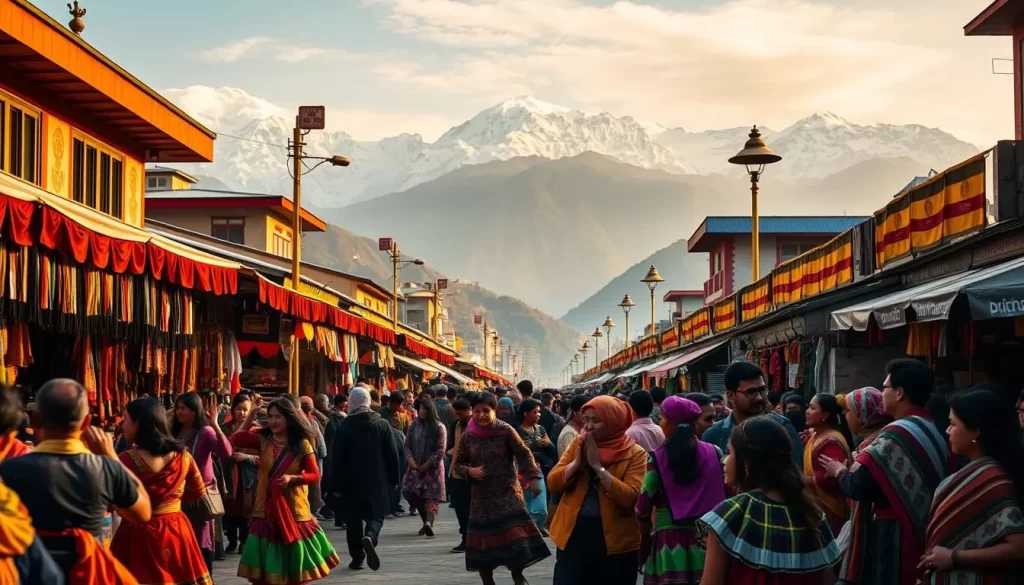
The spring and summer season, from March to June, offers pleasant weather and significant Buddhist festivals like Saga Dawa, making it ideal for exploring monasteries and spiritual destinations.
If you’re interested in indigenous festivals, August and September are rich with celebrations like Tendong Lho Rum Faat and Pang Lhabsol, showcasing Sikkim’s native traditions. Consider basing yourself in places like Gangtok, Pelling, or Ravangla for convenient access to festival venues and comfortable accommodations.
Conclusion
The festivals of Sikkim offer a profound experience, connecting you with traditions that span centuries. As you’ve discovered, Sikkim’s vibrant festivals provide more than just colorful celebrations; they offer windows into the state’s rich cultural heritage and spiritual evolution. When you visit Sikkim during these events, you’ll witness firsthand the harmonious blend of religious practices, community bonds, and natural elements.
The diverse Sikkim festivals ensure that your visit is always filled with meaningful cultural experiences. By participating, you become a part of Sikkim’s living heritage, creating lasting memories. As you plan your journey, remember that these cultural celebrations are immersive experiences that can transform your understanding of different ways of life and community. Sikkim’s festival calendar is a testament to its rich culture, making your visit a truly enriching experience.
The above is subject to change.
Check back often to TRAVEL.COM for the latest travel tips and deals.
